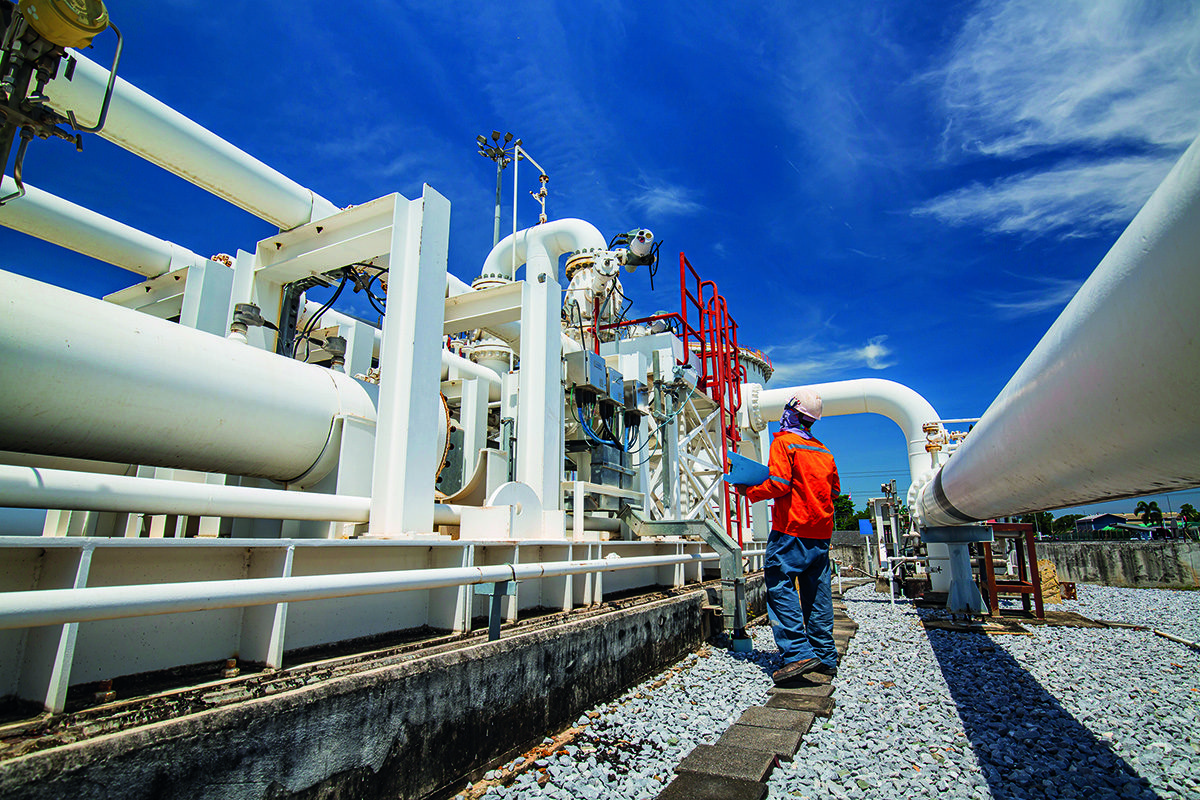
Gas leak measurement is germane to the realisation of goals such as the Global Methane Pledge. Doug Baer of instrumentation expert ABB offers some thoughts on the problem.
Originally proposed by the US and EU in September 2021, the Global Methane Pledge will see countries acting to cut methane emissions by 30 percent by 2030. Together, those involved account for almost half of the world’s total methane emissions, presenting massive scope for significant reductions to be achieved. The hope is that a concerted drive to reduce emissions will help to achieve at least a 0.3°C reduction in global heating by 2040 and contributing to the larger target of maintaining global temperature rise within the 1.5°C limit set by the 2015 Paris Agreement.
While there are many sources of methane emissions, including natural sources such as wetlands, one of the biggest contributors is natural gas production and distribution. According to the International Energy Agency (IEA), methane emissions from the oil and gas industry accounted for around 70Mt in 2020 – equating to five percent of world energy-related greenhouse gas emissions. With methane concentrations in the Earth’s atmosphere in 2019 reaching a record two and a half times higher than in pre-industrial times, there is an urgent need to find ways to tackle the problem of methane emissions, particularly those originating from industrial activities.
How do leaks occur?
Pipelines form the backbone of natural gas distribution and represent a safe and cost-effective way to transport natural gas. However, with many pipelines passing thousands of miles through a variety of territories – from crowded cities to remote regions – it can be difficult to know when and where a gas leak is occurring. Leaks can occur at all points in the network from collection systems at the wellhead to pipelines buried under streets and buildings. The causes of leaks can vary, with leakages occurring because of:
• Excavating accidents that result in the rupturing or puncturing of a pipeline
• Placing extremely heavy materials or equipment over buried pipelines
• Water main breaks that weaken roadways and pavement
• Excess accumulation of snow and ice on meters, gas pipes, and gas appliance exhaust and combustion air vents
• Fire or explosion near a pipeline
• Too much or not enough pressure in the gas system
• Equipment failure or corrosion
• Natural disasters such as floods, hurricanes, storms, or earthquakes
Financially, gas leaking from pipelines represents the loss of billions of dollars of revenue every year, both in terms of direct product and the effort and costs involved in replacing it.
In terms of safety, avoiding gas leakages can help avoid high profile incidents such as that in Thailand in October 2020, where a gas line explosion killed three people and injured 282.
How technology can help
The location, age and scale of gas pipelines means that gas leaks can never be eliminated, only reduced. As such, a good proactive maintenance regime is invaluable in helping to trace factors such as poor pressure management, corrosion and existing or potential fractures or cracks that could result in a leak.
Traditional methods of checking for gas leaks are slow and have tended to lack the accuracy and sensitivity needed to detect large, small, or hidden leaks easily, reliably and quickly. Technicians must walk the area under inspection using hand-held analogue detectors that can take a long time to calibrate or respond once on site. Because these systems test the air essentially only every few seconds, the technician must move slowly through the suspected leak site. Test results are manually entered in reporting systems, adding more time to the process.
These limitations have led to the increasing development and deployment of alternative methods utilizing new technologies. Recent advances in sensing, analytics and mobile technology have created a wave of gas leak detection solutions that perform significantly better than traditional methods. These systems can detect methane from natural gas leaks at concentrations of 1 part per billion (ppb), and thus from far distances, and respond in less than a second allowing pinpointing of leak origin within minutes.
An example is ABB’s mobile gas leak detection solutions.
Combined with a GPS module, an onboard ultrasonic anemometer to measure wind velocity, and advanced proprietary analytics, ABB’s MobileGuard™ can detect, precisely locate, and accurately estimate the size of natural gas leaks at a rate that covers 10 to 25 times more land area per hour than traditional methods. The technology allows detection of methane from leaks from up to 300 feet away in a vehicle moving at 55 mph. Importantly, it eliminates false positives associated with biogenic sources of methane like sewage and animal waste by also detecting ethane, found only in thermogenic pipeline gas, along with methane.
Another relevant technology is the use of unmanned aerial vehicles (UAVs) such as ABB’s HoverGuard™ UAV-based gas leak detection system, which are fitted with miniaturized gas analyzers capable of detecting variations in ambient methane gas concentrations – normally about 2ppm – with a precision of parts per billion (ppb).
When methane is leaking from a pipeline, it is carried by the wind, mixing with the air and decreasing in concentration as it travels further from the point of origin.
Able to gather accurate gas concentration data over large areas whilst moving at speed, UAV solutions offer a fast, low cost and safe methodology for identifying potential leakage points, especially when compared to traditional techniques.
To better enable the exact location of a leak to be pinpointed, the HoverGuard solution also combines an anemometer and GNSS (Global Navigation Satellite System) sensor to gather data on wind speed and position, together with innovative mapping software which uses the data to produce detailed reports on leak locations and relative sizes. Able to be shared either directly or via the cloud, these reports can be easily and rapidly made available to help pipeline operators devise a suitable find-and-fix strategy.
ABB offers similar solutions for detecting, mapping and quantifying leaks while walking (MicroGuard™) and in stationary applications (EverGuard™).
At the heart of all these solutions is a high sensitivity analyser capable of measuring methane concentrations at rates over 2Hz. The analyser uses a principle called Off-Axis Integrated Cavity Output Spectroscopy (OA-ICOS), which works by using a tuneable laser source that produces light at a selected wavelength for interacting with the target gas being analysed.
With a sensitivity over 1,000 times higher and a responsivity far faster than conventional leak detection technologies, ABB’s OA-ICOS method means the analyser detects single parts per billion (ppb) levels of the target gases every second, enabling variations in atmospheric concentrations to be quickly and reliably measured from long distances.
Each of these solutions are cloud-connected and cybersecure to enable immediate sharing of results describing locations and sizes of leaks in real time.






